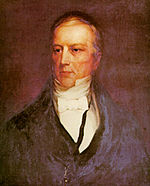United States House of Representatives elections, 1832
|
|
|||||||||||||||||||||||||||||||||||||||||||||||||||||
|---|---|---|---|---|---|---|---|---|---|---|---|---|---|---|---|---|---|---|---|---|---|---|---|---|---|---|---|---|---|---|---|---|---|---|---|---|---|---|---|---|---|---|---|---|---|---|---|---|---|---|---|---|---|
|
|||||||||||||||||||||||||||||||||||||||||||||||||||||
|
All 240 seats to the United States House of Representatives 121 seats needed for a majority |
|||||||||||||||||||||||||||||||||||||||||||||||||||||
|
|||||||||||||||||||||||||||||||||||||||||||||||||||||

|
|||||||||||||||||||||||||||||||||||||||||||||||||||||
|
|||||||||||||||||||||||||||||||||||||||||||||||||||||
Elections to the United States House of Representatives were held in 1832. They were held concurrently with the 1832 presidential election, in which Democrat Andrew Jackson was reelected.
The Jacksonians gained 17 seats, picking up several new seats in districts that were created following the 1830 Census; the rival National Republican Party lost a net total of three seats. Economic issues were key factors in this election. Southern agricultural districts reacted angrily to passage of the Tariff of 1832, which led to the Nullification Crisis. President Andrew Jackson and the Jacksonians showed a distrust for the banking sector, particularly the central Second Bank of the United States, which was strongly supported by the rival Anti-Jacksonian Party.
The third party Anti-Masonic Party, based on anti-Masonry, gained eight seats, and Nullifier Party, a John C. Calhoun-led state's rights party that supported South Carolina in the Nullification Crisis, picked up five seats, including all but one of the nine representatives in the South Carolina delegation.
...
Wikipedia




